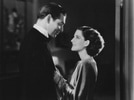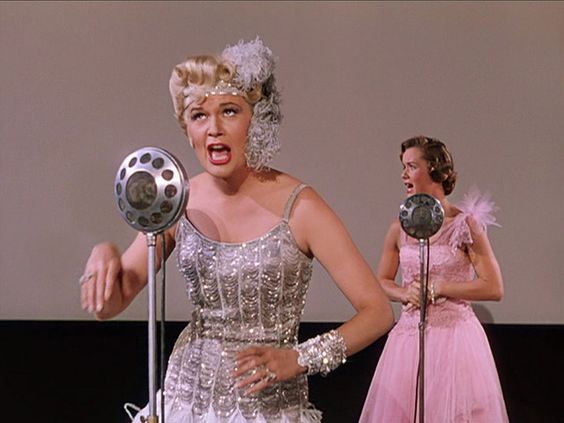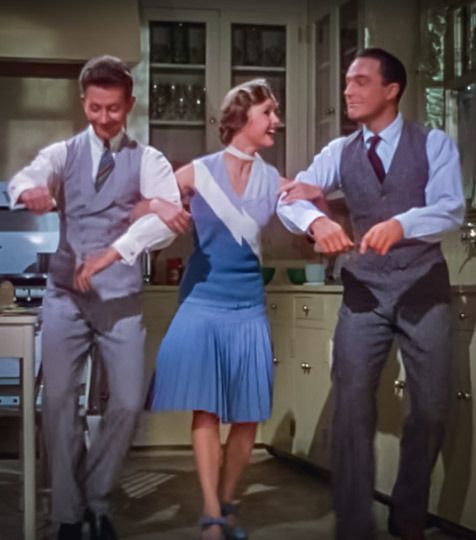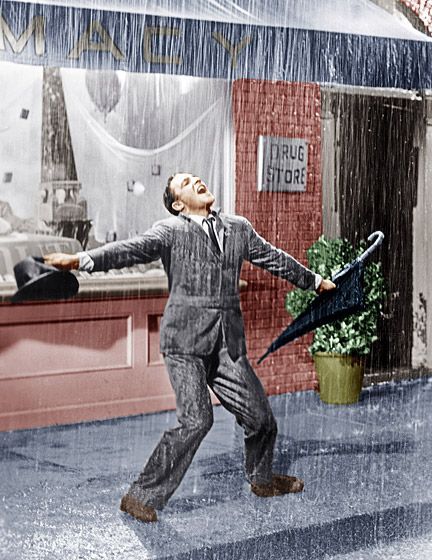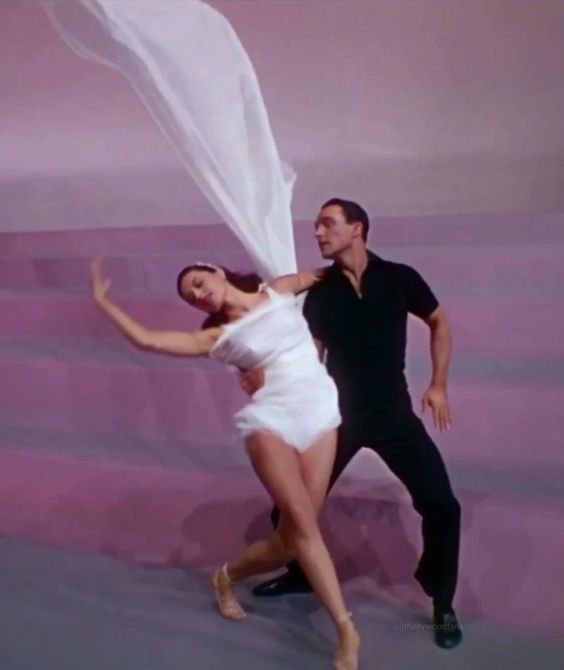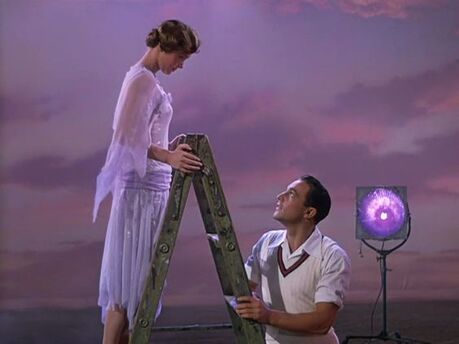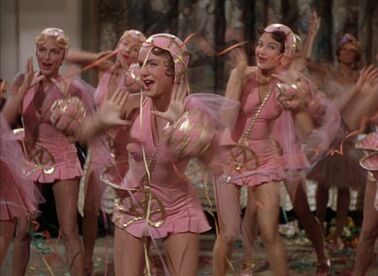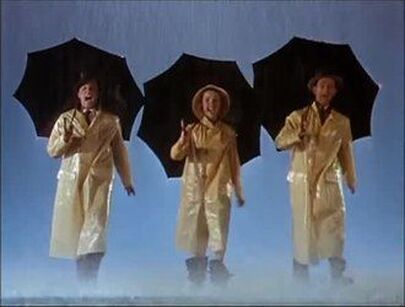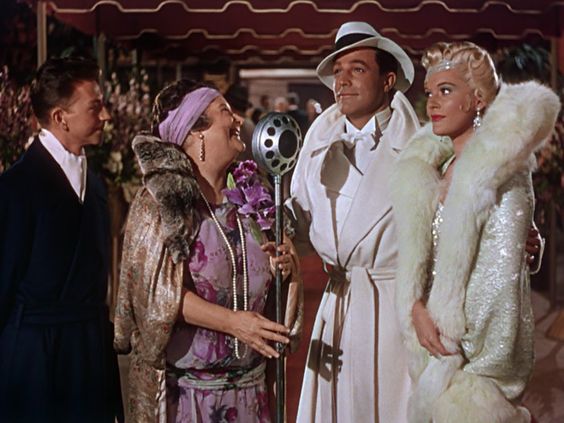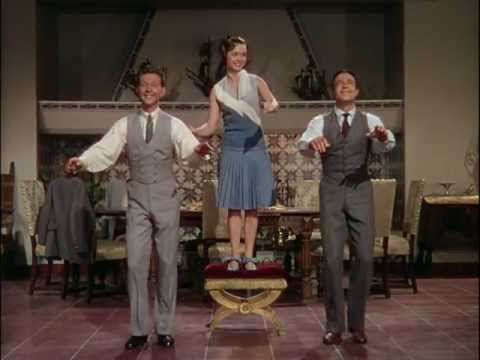Singin' in the Rain Introduction (Beyond the Bay)
|
This week I will be introducing Singin’ in the Rain, produced by MGM in 1952 and starring Gene Kelly, Debbie Reynolds, Donald O’Connor & Jean Hagen. The film was co-directed by Stanley Donen & Gene Kelly and is almost uniformly considered the best movie musical of all time. Released in the Golden era of Hollywood musicals, the film wasn’t a big hit when it was released, overshadowed as it was by Vincente Minelli’s An American in Paris, also starring Gene Kelly & released 5 months before. Just as Singin in the Rain was going into general release, An American in Paris was re-released back into the marketplace to take advantage of its best picture Oscar win, taking with it valuable resources & attention from Singin in the Rain.
A comedic story about the transition from silent pictures to sound in 1927, Singin’ in the Rain has been called “a musical for people who don’t like musicals” due to its perfectly executed combination of comedy, romance, music & dance. It’s joyous lampooning of all things Hollywood is at the core of its brilliance because from the outset it’s clear that no one element will overwhelm the others, nor will the film take itself too seriously. When the film opens, Gene Kelly’s Don Lockwood, the greatest of the silent film stars, is rehashing his prepackaged life story at a Hollywood premiere, extolling the virtues of dignity, while a montage of ridiculous images flash across the screen, undermining his pomposity. |
Immediately it’s clear that screenwriters Betty Comden & Adolph Green are willing to bite the hand that feeds them as they take Hollywood’s self-absorption down a peg or two, for comedic purposes only, of course. It’s this manufactured outer truth that Hollywood had/has always put out into the world, undermined by the reality of struggle, self-abasement & sacrifice that immediately endears the audience. Don is a stuffed shirt, but we, as the filmgoing audience, love him for his grander.
The film, itself, is widely recognized for 2 of its signature musical numbers, the title track, where Kelly joyfully dances on a deserted & rain drenched street, & the other worldly Broadway Ballet sequence between Kelly & Cyd Charisse. The 2 sequences could not be more different, but they help to balance the film in a way no other musical had attempted. Kelly’s Don, expresses his inward emotions in a completely silly and outwardly physical way that is as memorable as it is uplifting. Film historian Jeanine Bassinger, writing in The Atlantic Magazine in 2019, points to the script that uses just 6 words to outline what has become the quintessential movie musical sequence. “Don dances wet in the street” perfectly captures the simple genius of moviemaking because it’s Kelly’s carefully choreographed & shot song & dance sequence that lifts the viewer organically by his shear exuberance. Kelly was at the peak of his career as a dancer, singer, choreographer & director, which makes the sequence appear effortless & spontaneous, but just as movie magic can make houses fly & planets explode, the scene was anything but simple, taking 6 days to rehearse, 3 days to shoot & had to be timed so as not to effect the water pressure in Culver City, as they dumped thousands of gallons of water on the 2 block long set.
The Broadway Ballet dance, the 13-minute sequence between Kelly & a mysterious, vamp-like dancer, played by Cyd Charisse, is truly the show stopper in the film. Kelly called the sequence “Cine-Dance” because he & Donen could use camera movement to enhance the dancing space & provide an emotional attachment to the dancers that was not possible in a traditional theatre setting. The sequence, which has been described as “a purposefully designed kaleidoscope of showbusiness cliches” cost nearly a quarter of the final cost of the film, entailed more that 50 separate camera set ups, airplane motors & a 50-foot veil, but the result is a seamlessly beautiful sequence that captures the elegance & physicality of Kelly’s dancing style.
While not part of the Broadway Ballet, Debbie Reynolds was an integral part of the film’s story. She was only 19 when the film went into production, wasn’t trained as a singer or a dancer, & had very little film experience, but her naive exuberance underscores the story of the transition within the film industry & fully places the story in a safer & more innocent era than the film’s release. Her character & her performance represent the roaring ‘20’s carefree, yet determined attitude, a far cry from the post-war darkness that Hollywood had fallen into by the late 40’s & early 50’s. This separation in time also helps eliminate the cynical nature of lampooning a bygone era & the exponential growth in moviemaking reinforces the naivete of filmmakers introducing sound into the movies. Singin’ in the Rain is made safe by this distinction & Reynolds’ performance is the main reason why.
While not part of the Broadway Ballet, Debbie Reynolds was an integral part of the film’s story. She was only 19 when the film went into production, wasn’t trained as a singer or a dancer, & had very little film experience, but her naive exuberance underscores the story of the transition within the film industry & fully places the story in a safer & more innocent era than the film’s release. Her character & her performance represent the roaring ‘20’s carefree, yet determined attitude, a far cry from the post-war darkness that Hollywood had fallen into by the late 40’s & early 50’s. This separation in time also helps eliminate the cynical nature of lampooning a bygone era & the exponential growth in moviemaking reinforces the naivete of filmmakers introducing sound into the movies. Singin’ in the Rain is made safe by this distinction & Reynolds’ performance is the main reason why.
The joyous nature of the film is evident in every scene, because it is a love letter to Hollywood moviemaking. A satire, but only in the sense of poking fun at family. What gives me particular pleasure in watching Singin in the Rain again & again are the too numerous to count Hollywood references, both obvious & less so. Just as the songs, 12 of which were recycled from earlier films, beget former movie performers or ideas, the scenery, the costumes & the props all harken back to Hollywood’s glorious past. As we look at the 40’s & 50’s as the golden age of Hollywood, viewers of that era looked back at the late silent & early sound era as a time of great creativity & growth. Singin’ in the Rain is the perfect bridge between all 3 eras because it celebrates the magic that continues to enthrall moviegoers today.
